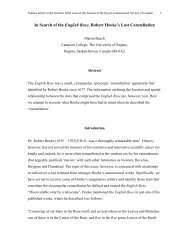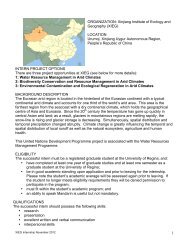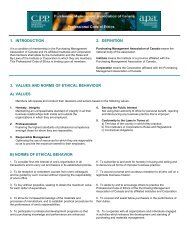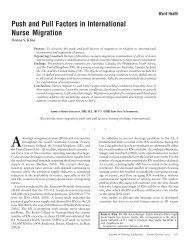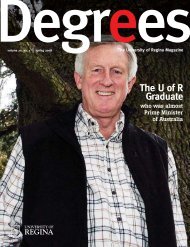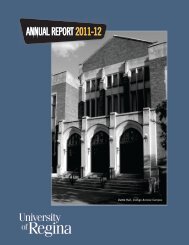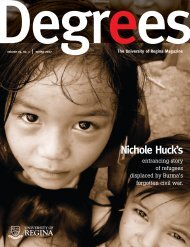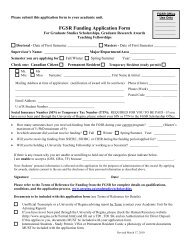The Indigenous Land Claims in New Zealand and Canada
The Indigenous Land Claims in New Zealand and Canada
The Indigenous Land Claims in New Zealand and Canada
Create successful ePaper yourself
Turn your PDF publications into a flip-book with our unique Google optimized e-Paper software.
of Natives to protect their historic l<strong>and</strong>-based <strong>in</strong>terests led to negotiations toward a l<strong>and</strong> claimsettlement” (INAC 1993, 1).An agreement-<strong>in</strong>-pr<strong>in</strong>ciple was reached between <strong>Canada</strong>, Quebec, the Cree <strong>and</strong> the Inuit <strong>in</strong>1974 <strong>and</strong> the f<strong>in</strong>al agreement was signed on November 11, 1975. Accord<strong>in</strong>g to Bone,<strong>The</strong> James Bay Agreement called for $225 million to be paid to the Cree <strong>and</strong> Inuit over aten-year period, outright ownership of 13,300 km 2 , <strong>and</strong> exclusive hunt<strong>in</strong>g rights over155,000 km 2 (Bone 1992, 220).Subsequently, the Naskapi Indian B<strong>and</strong> of northeastern Quebec reached a similar agreement, theNEQA, which became part of an amended JBNQA <strong>in</strong> 1978. Under the agreement, the Naskapireceived $9 million <strong>in</strong> compensation. <strong>The</strong> fact is that this agreement is the first of the modernsettlements <strong>and</strong> as such “may have set the terms for future modern treaties” (Bone 1992, 220). Thus,its terms are worthy of review <strong>in</strong> some detail.<strong>The</strong> l<strong>and</strong> provisions of the agreement are complex, <strong>in</strong>volv<strong>in</strong>g three categories, each with adifferent level of Aborig<strong>in</strong>al ownership <strong>and</strong> control. Category I l<strong>and</strong>s are set aside for the exclusiveuse <strong>and</strong> benefit of Aborig<strong>in</strong>al peoples of the Cree <strong>and</strong> Inuit communities of the James Bay region. <strong>The</strong>Cree received 2,158 square miles <strong>and</strong> the Inuit 3,130 square miles of such l<strong>and</strong>. <strong>The</strong> variouscommunity corporations hold title to the l<strong>and</strong> <strong>and</strong> it cannot be sold to anyone other than the prov<strong>in</strong>ceof Quebec. <strong>The</strong> JBNQA says the follow<strong>in</strong>g about Inuit Category I l<strong>and</strong>s,Title to the l<strong>and</strong> shall be transferred to Inuit Community Corporations for Inuitcommunity purposes, which shall <strong>in</strong>clude the use of the l<strong>and</strong>s by the Inuit CommunityCorporations for commercial, <strong>in</strong>dustrial, residential or other purposes (JBNQA, Section7.1.3).Category I l<strong>and</strong>s or any portion thereof may not be sold or otherwise ceded except to theCrown <strong>in</strong> the right of Quebec. Subject to the provisions of this section, an InuitCommunity Corporation shall enjoy the usual rights of an owner <strong>and</strong>, more particularly,may make with any person, <strong>in</strong>clud<strong>in</strong>g a non-Inuit, agreements <strong>in</strong> respect to servitude,leases <strong>and</strong> other rights of use <strong>and</strong> occupation respect<strong>in</strong>g such l<strong>and</strong>s (JBNQA, Section7.1.5).Similar terms <strong>and</strong> conditions apply to the Category I l<strong>and</strong>s of the Cree.13



